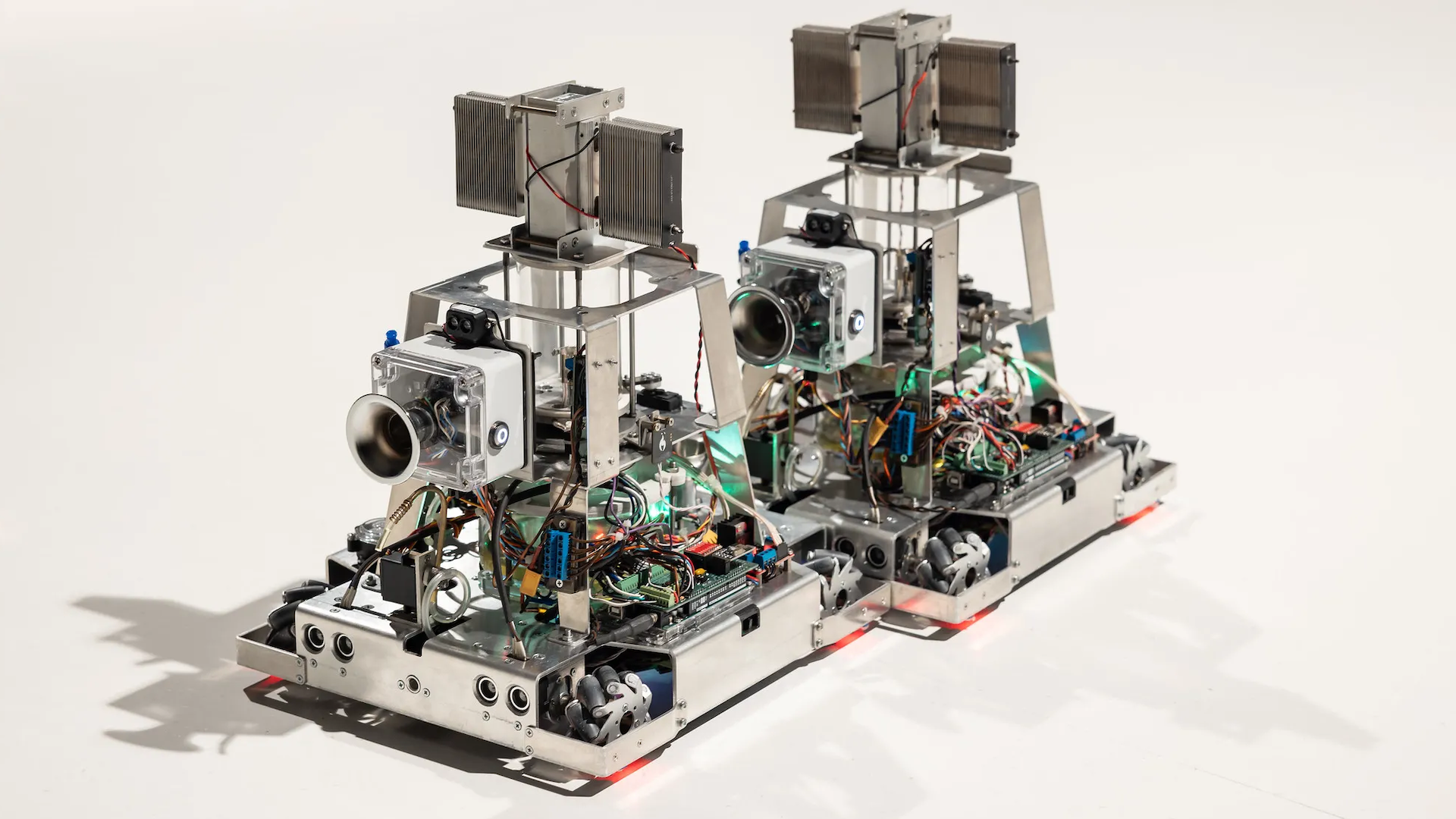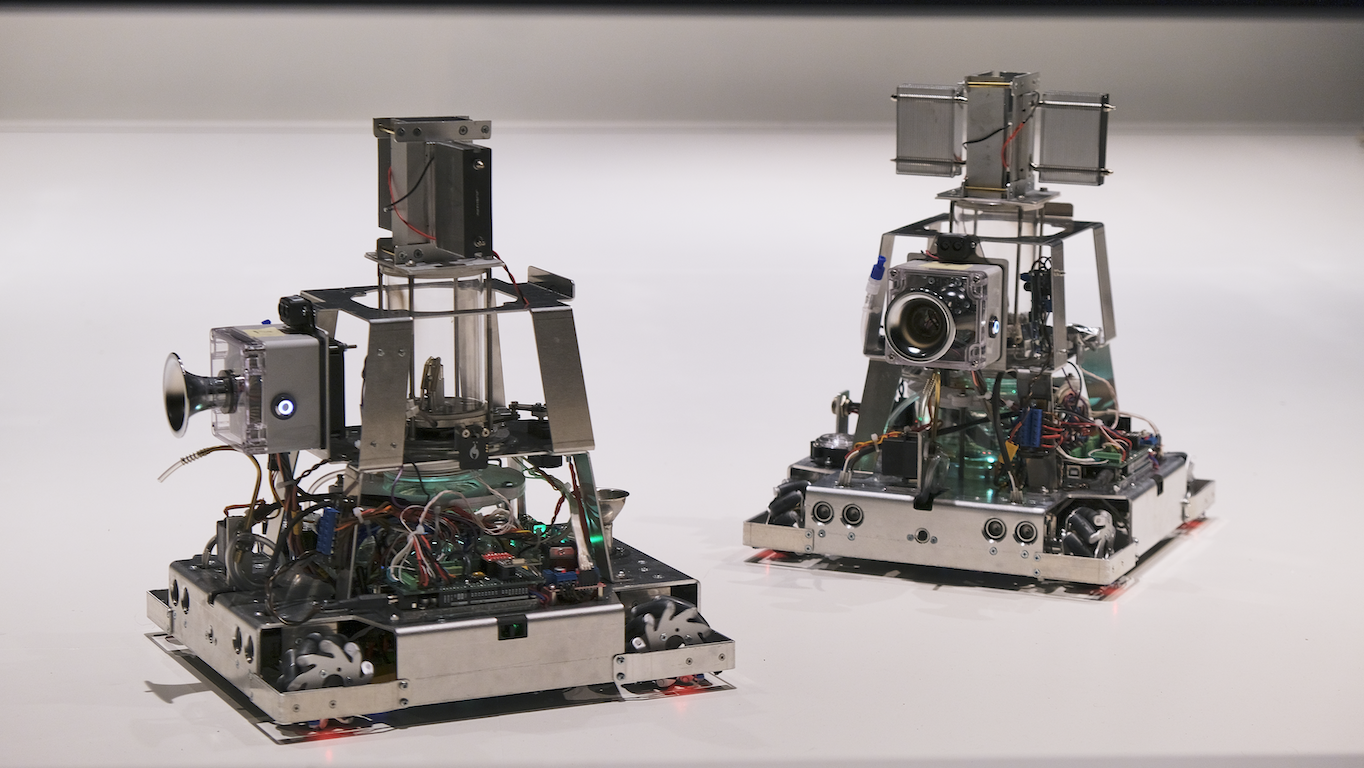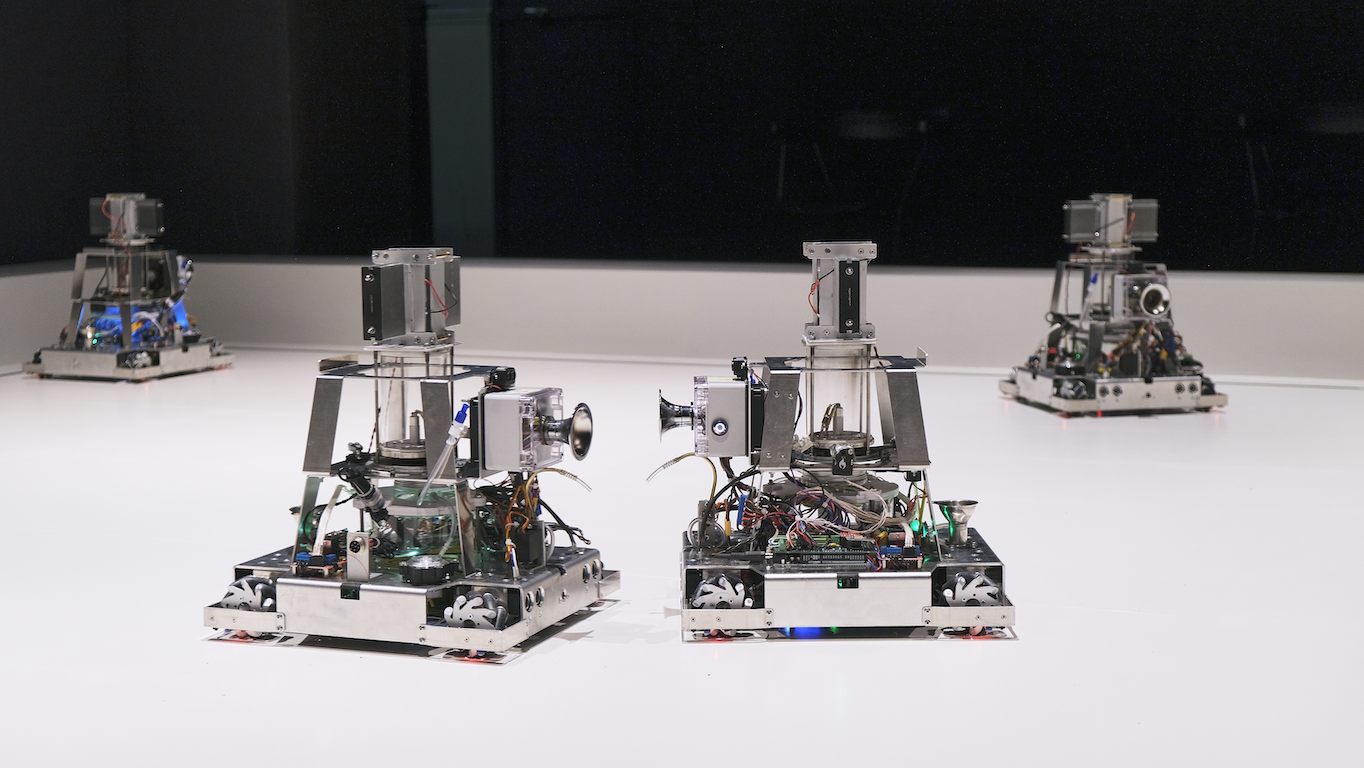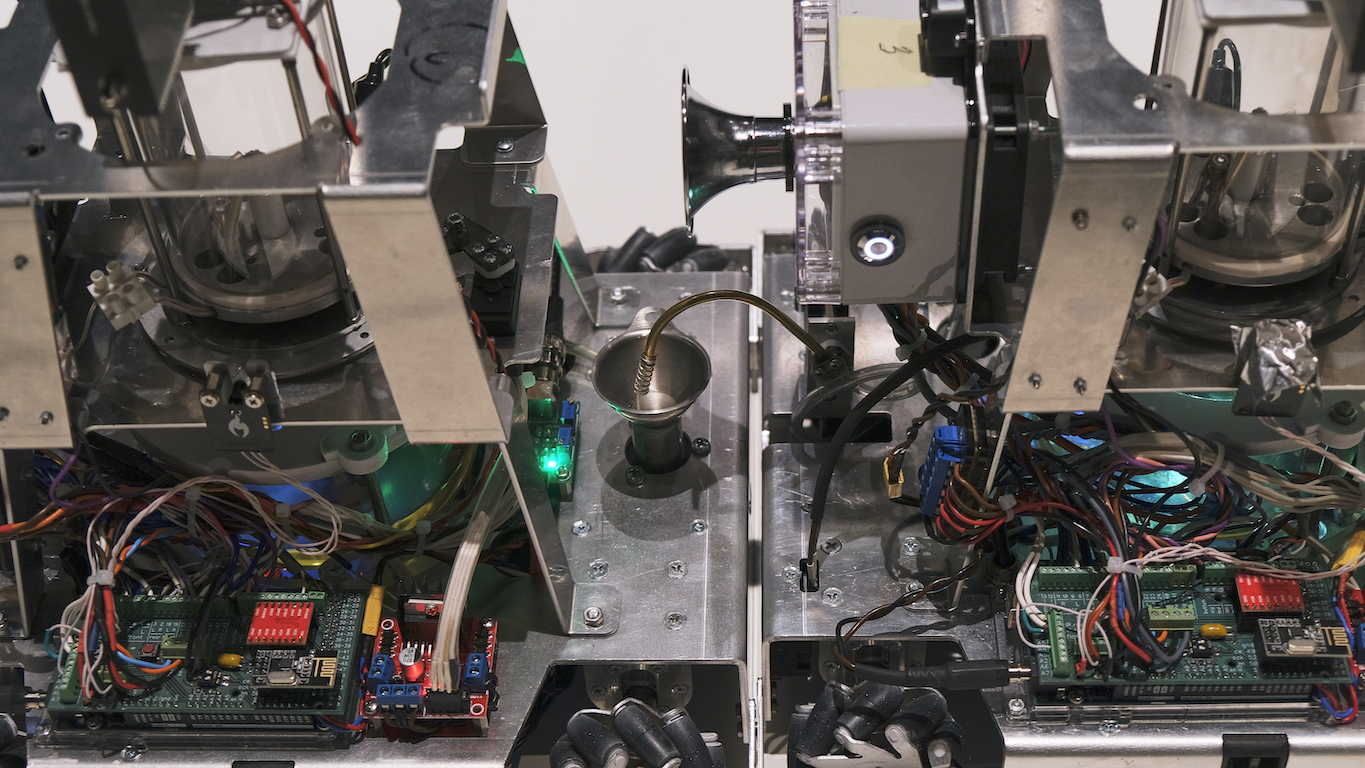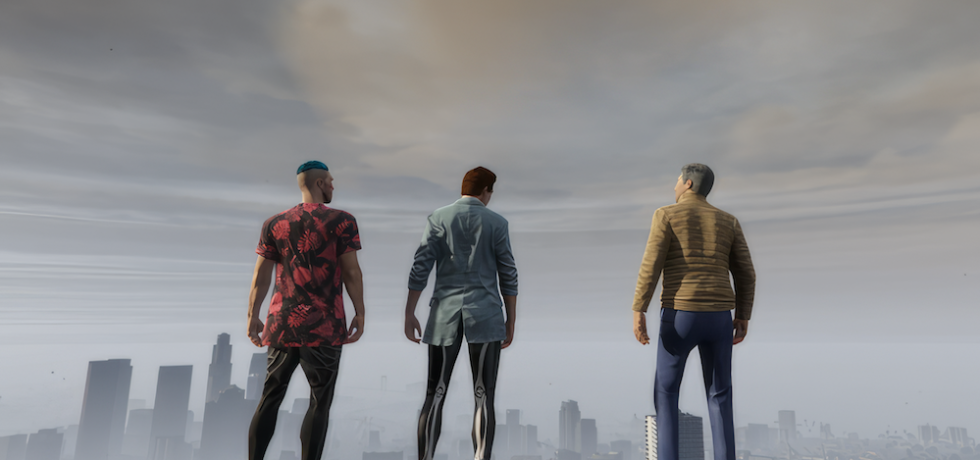Kerosene Chronicles. Fungus
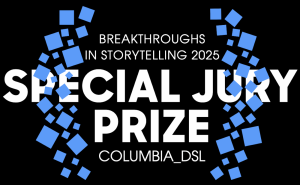
Kerosene fungus (scientific name: Amorphotheca resinae) is a technophile organism that lives in fuel tanks and feeds on kerosene, diesel and other substrates rich in hydrocarbons. It reproduces abundantly and can damage oil infrastructure and lead to airplane malfunction, causing planes to crash.
In 1960s, kerosene fungus was one of the most prevalent species feeding on fuel, but it wasn’t distinguished from other fungi until the publication of a paper by D.G. Parbery in the Australian Journal of Botany in 1969. The fungus turned out not only to be accompanying humans throughout our technological revolutions but to be heavily invested in us, since its evolutionary strategy is based on using the consequences of the anthropocene to gain an advantage over other bio-agents.
As it metabolizes, the fungus changes the smell of the fuel in which it has settled. For the collective Where Dogs Run, this effect became a starting point for modeling the situation in which the chemical interaction of fungus and machine creates an opportunity for establishing chemical communication between robots. In this case the kerosene is not only used as a nutritional source for the fungus but also as an additional fuel source for the machine.
Each of the four robots is equipped with a tank containing kerosene fungus. The tank’s data (PH-meters, gas analysis, kerosene level) affects the robots’ choice of strategy and the mode of communication they select for interacting with others in the group. These modes are kerosene preservation (escape); active search for fresh kerosene (hunt); kerosene excess (altruism); exploration, and passive wait for changes.
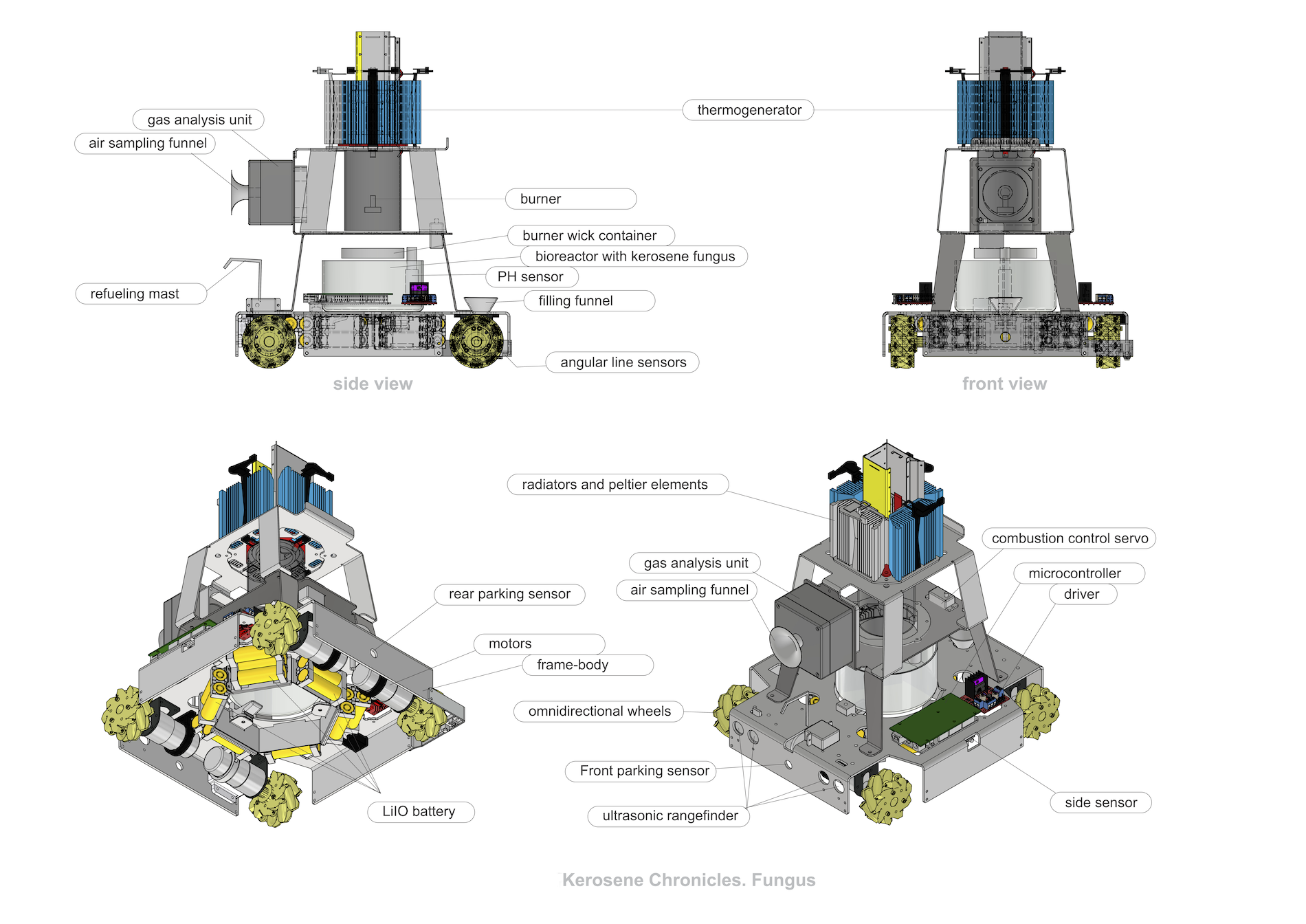
The fungus machines use smell to find one another. From time to time they begin to move chaotically or swirl in place to find a direction with the highest concentration of kerosene fumes. When two robots with matching strategies meet (e.g., one is prepared to give out of altruism or to submit, while the other is ready to take kerosene), one robot can join with another to take its kerosene. If the joining is successful, the fuel burner inside one of these robots might light up to charge the heat generator on top of the fungus machine. The possibility of strategy alignment or misalignment complicates communication within the group, making it unpredictable and allowing us to view the fungus machines’ action on the field as a sort of social interaction.
Where Dogs Run sees the necessity of developing communication between bio- and cyber-organisms. Olfaction remains the last human sensory system to hold some advantage over artificial sensory systems. If our cognitive abilities should prove to be insufficient for proper communication with the machine, the group suggests, our sense of smell might turn out to be our evolutionary chance. But at the moment it might work as one of the ways to establish horizontal relationships between the living and the non-living.
Kerosene Chronicles. Fungus was first shown in prototype form in the 2021 exhibition HYDRA: New Media Art in the Context of Eco-Anxiety at Sevkabel Port, an arts district on the industrial waterfront of St. Petersburg. Since it was initially unclear to the members of Where Dogs Run how this system would behave over a long period, the exhibition served as a public test that allowed them to understand how people would react and what needed to be changed. They found a great deal of interest in the fungus itself—how it lives in nature, in an airplane, where it can be found, how it feels inside our robots, whether the robot could accidentally burn the fungus in the kerosene burner inside its body. People watched the robots as if they were unfamiliar animals and often sympathized with them in their difficult attempts at docking and pumping kerosene.
In 2024, during a residency at the Kapelica Gallery in Ljubljana, Slovenia, Where Dogs Run created a new version of the robots. Taking into account their observations from St. Petersburg and subsequent exhibitions, they made a number of changes that helped to complicate the robots’ behavior within the group while simultaneously giving the audience more opportunities to understand their interactions. The current iteration was developed with the support of the Kersnikova Institute in Ljubljana in collaboration with AFF Projects and the Vienna-based CultTech Association. It was first exhibited in June 2024 at the Kapelica Gallery in Ljubljana and in September at Ars Electronica in Linz, Austria. Scientific consultant: Anastasia Krivushina, Ph.D. in bioscience and senior researcher in the Faculty of Biology at Lomonosov Moscow State University. Programming: Sergey Mashkov; technical support: Gleb Andreev. Where Dogs Run would like to give special thanks to Olga Vad and Lidiya Gumenyuk, without whom the first iteration of the project in St. Petersburg would not have been possible.
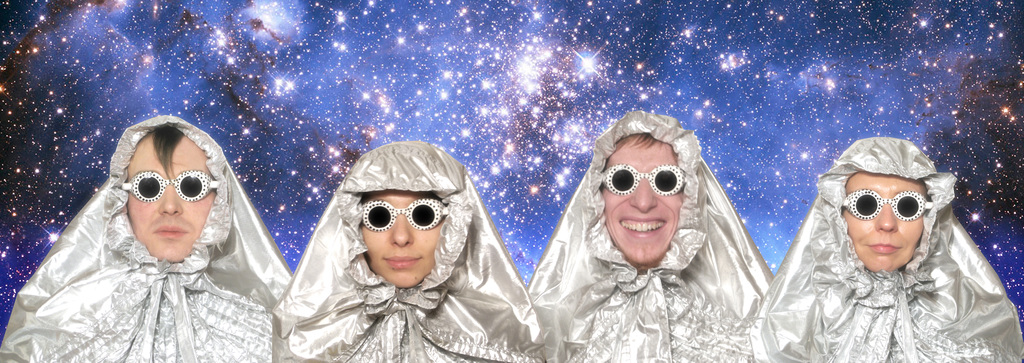
Where Dogs Run: Alexey Korzukhin, Olga Inozemtseva, Vladimir Bulatov and Natalia Grekhova, in a photo from a bygone fun time.
Where Dogs Run (Kuda Begut Sobaki in Russian) was formed in 2000 in Yekaterinburg in the Ural Mountains of Russia. The group’s artistic practice lies primarily in the field of technological art and uses a wide range of multimedia: video, robotics, hybrid installations, performance and D.I.Y. packages. The group, initially comprised of Alexey Korzukhin, Olga Inozemtseva, Vladimir Bulatov and Natalia Grekhova, combines innovative visual techniques with scientific research instruments and low-tech aesthetics. They were down to three when they relocated to Slovenia in 2023 in the wake of Russia’s invasion of Ukraine.
Most projects by Where Dogs Run deal with serious scientific problems: the problem of the three-body system, Mandelbrot set, machine learning, natural language processing, virtual modeling, chemical communication between bio- and cyber-organisms. In their projects, they create complex hybrid systems which are designed to expose the psychological and social mechanisms that, while unnoticed, determine day-to-day reality. This makes it possible for them to create an artificial world that wants to be futuristic and free, but which nevertheless remains inseparably connected to historic reality.
INTERVIEW WITH THE ARTISTS This interview was conducted over email by Frank Rose of Columbia DSL in April 2025. The members of Where Dogs Run chose to speak as a group.FR: What inspired you to undertake Kerosene Chronicles. Fungus? What were you hoping to explore in the process?
WDR: We don’t remember exactly how we learned about the existence of the kerosene fungus, but its properties struck us so much that we immediately started looking for ways to collaborate with this organism. When, from Anastasia Krivushina’s research, we found out about the kerosene fungus’s ability to change the smell of kerosene, we realized that this was the very point we could lean on. It seemed perfect to us for modeling chemical communication between the fungus and the machine, and between machine and machine. From that moment on, we began thinking about how to create a starting situation from which some variety of “behaviors” of agents could gradually grow. We looked for how we could complicate communication between the bio- and cyber-entities we had imagined, using not very complex, accessible technical means. We just really wanted to see what would end up happening over a long period of time. We quite often act this way: we create a situation and simply watch.
FR: Once you committed to the idea, what was the first step?
Our first task was this: to find the kerosene fungus in order to learn how to work with it, learn how to create optimal conditions for it, and generally understand the speed of its growth. Since we are a group of artists and not a scientific laboratory, we couldn’t simply order the kerosene fungus from a microorganism collection. This led us to search for kerosene at old abandoned airfields in the tanks of old airplanes, to look for old railways, and to forest walks with kerosene. In the end, thanks to the help of friends, we collected a collection of fuel samples and began experimenting with them. After we managed to obtain the fruiting body of the fungus, we were able to start designing a robot in which it could settle.
FR: How did you imagine the viewer’s role in experiencing this installation? Were you hoping to evoke a specific kind of emotional resonance?
WDR: We assumed that this would turn out to be a rather boring sight for most viewers, since we couldn’t clearly imagine the frequency of significant (and at the same time, visible) events in the installation. But it was important for us to preserve natural temporality. Therefore, we understood that our work could only be of interest to a viewer who was willing to spend time observing these agents as living organisms with freedom of action. And we could only hope that this rare observer would get the feeling that he or she was seeing and sensing something alive, unpredictable, fragile and vulnerable.
FR: Was there anything that emerged unexpectedly as you were working on this?
WDR: This might sound funny, but what surprised us most was when we realized that we had learned to distinguish between different samples of kerosene and different states of the kerosene fungus in it by smell. We didn’t try to do this consciously, as we were used to thinking that the human sense of smell is very poorly developed. This strange new ability came as a big surprise to us. We began to imagine hypothetical systems of publicly accessible school education in which the development of the sense of smell in children would receive as much attention as, for example, the development of musical hearing or visual literacy. We liked imagining how this could gradually change the ways communication works on many different levels in the technobiosphere. The human sense of smell is very weak compared to other animals and insects, but apparently still good enough compared to machines. Other human sensory systems are already inferior to artificial ones, so it seems important to us to develop what still remains our advantage.
FR: This project has the look of—and contains elements of—a science experiment, but it also has elements of a story. What story were you trying to tell?
WDR: For us, this is a continuing experiment. Initially, we wanted to start a conversation about how we could attempt to build other relationships between all living and non-living things, how we can try to reconfigure the optics with which we look at natural and artificial entities and processes, how we can look for ways to bring their “interests” closer together. But now, every time we launch robots onto the platform, we don’t know what exactly will happen, how each of the agents will behave today, and we are always concerned about both the kerosene fungus — our protagonist — and the machines that depend on its state. We only know the beginning of the story. And this story forces us to help it develop in the direction of greater codependency and closer cooperation between its heroes.
“We could only hope that the observer would get the feeling that he or she was seeing and sensing something alive, unpredictable, fragile and vulnerable.”
FR: Kerosene Chronicles. Fungus went through various iterations before its display in 2024 in Ljubljana and at Ars Technica. How did it change over the years? Were these changes planned in advance or made in response to feedback from other people?
WDR: We had the opportunity to make long-term observations of the interactions within this group of bio-cyber agents. We kept a “robotic chronicle” recording all successes, failures, and their presumed causes. Analyzing these records, we were able to understand which difficulties were unnatural for the situation we had created (i.e., related to the limitations of our technical capabilities and solutions), and how we could try to reduce their impact on what was happening. At the same time, responding to questions from attentive viewers, we realized that we could make some of the hidden causes behind the robots’ actions more understandable to the observer. Initially, we understood that after prolonged observation of the robots’ behavior, we would want to make changes. Essentially, we were testing how our assumptions about the development of the situation after launch were validated or not, and how our technical solutions worked over an extended period of time.
All this helped us compile a list of necessary changes and incorporate them into a new iteration in Ljubljana at the Kapelica Gallery.We changed the method of data collection from the bioreactor, created a more compact integrated circuit board (which optimized many processes), redesigned the heat generator and combustion system, improved the entire sensory system, the fungus protection system in the robot’s bioreactor, changed the program to make interactions more dynamic, adjusted the color coding of robot modes/states, and introduced a new way of data exchange between them. We also managed to extend the working duration of the group. Thus, in the current iteration, we attempted to complicate the behavior of the agents within the group, while simultaneously providing the viewers with more opportunities to understand the interactions that arise between them.
